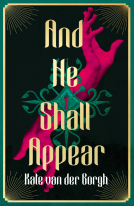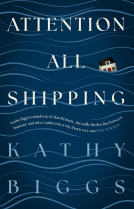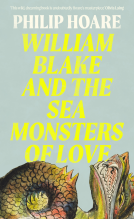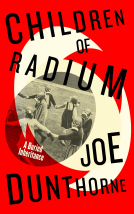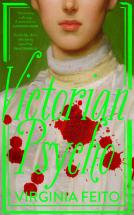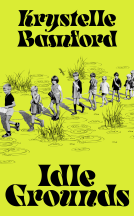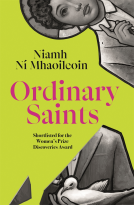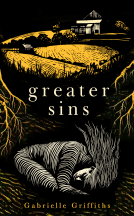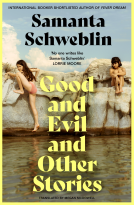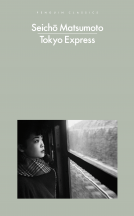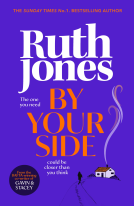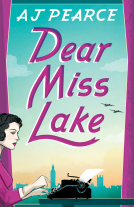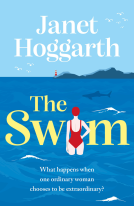
Blue Postcards
by Douglas Bruton
This title was previously available on NetGalley and is now archived.
Send NetGalley books directly to your Kindle or Kindle app
1
To read on a Kindle or Kindle app, please add kindle@netgalley.com as an approved email address to receive files in your Amazon account. Click here for step-by-step instructions.
2
Also find your Kindle email address within your Amazon account, and enter it here.
Pub Date 1 Oct 2021 | Archive Date 3 Aug 2021
Talking about this book? Use #BluePostcards #NetGalley. More hashtag tips!
Description
A Note From the Publisher
This title is part of the Fairlight Moderns collection.
Advance Praise
'It is a story, unlike our ability to see colour, that haunts and intensifies rather than diminishes with time.' —Carmen Marcus, author of How Saints Die
'The novel—and the magic blue Tekhelet thread that stitches it together—will stay with readers forever, leaving them in a more beautiful and coincidental world.' —Julia Nemirovskaya, poet, playwright and writer
'This is a wonderful novella - not a word is wasted.' —Julie Corbin, author of A Lie For A Lie
'Seductively original, linguistically daring, almost dangerously immersive - with Blue Postcards, Douglas Bruton continues to build a deserved reputation as one of our most skilful story-tellers. A real delight.' —Stephen May, author of the Costa shortlisted Life! Death! Prizes!
Available Editions
| EDITION | Other Format |
| ISBN | 9781912054770 |
| PRICE | US$13.95 (USD) |
| PAGES | 160 |
Featured Reviews
 Joseph C, Reviewer
Joseph C, Reviewer
“Fairlight Moderns”, Fairlight Books’ series of “new short modern fictions from around the world” is putting the novella on the map of contemporary literature. The previous sets of titles in the series, published in 2018 and 2019, were ample proof that this literary form could fit a variety of genres and settings, and could also leave room for experimentation in subject and form. Amongst several crackers which debuted as Fairlight Moderns one could mention Bottled Goods by Sophie van Llewyn, a magical-realist “novella-in-flash” set in 1970s Communist Romania which went on to be longlisted for The Women’s Prize for Fiction, The Republic of Consciousness Prize and The People’s Book Prize and which was eventually reissued in the US by HarperCollins to further critical acclaim.
Another clutch of Fairlight Modern titles is being published in 2021. Of these, I have just read Blue Postcards by Douglas Bruton and I am pleased to report that, if this novella is anything to go by, the forthcoming set of Moderns is as exciting as what has come before. Blue Postcards combines literary experimentation with good old storytelling and shows that innovative fiction can also be entertaining.
In a slim volume, Bruton weaves together three different storylines. The main narrative is, intriguingly, a mostly non-fictional account of the career of Yves Klein. Klein was an avant-garde artist fixated with the colour blue, who startled the art world with his all-blue paintings and “performance art” events (including the use of “human paintbrushes” - female models daubed in blue creating art… in blue). Although not primarily known as a musician or composer, Klein also created the John-Cage-like “Monotone Symphony”, in which musicians play one note continuously for forty minutes. As far as the Klein segments are concerned, Bruton adopts a Sebaldian approach, relying heavily on factual, historical events with a sprinkle of authorial imagination. This seems to be the in-thing at the moment. One thinks, for instance, of Labatut’s When We Cease to Understand the World which, incidentally, also features the colour “blue”.
The second strand in the novella is the tale of a tailor (whose clients include Yves Klein) and the tailor’s experiences of antisemitism in the years leading to the Second World War. What brings everything together is what might be considered the “frame story”. This is set in contemporary France and its protagonist is the narrator of the novella, who discovers love whilst seeking Yves Klein memorabilia. In a postmodern move, the narrator himself suggests that this sentimental tale in the shadows of the Tour Eiffel is a product of his imagination, leading us to question the truth of all that we have read. The thin line between reality and make-believe was, after all, one of the themes of Yves Klein’s output. This is exemplified, for instance, in the series of photomontages known as “Leap into the Void” (referenced in Bruton’s novella), which cleverly show Klein in gravity-defying flight.
If this all sounds rather convoluted, just wait until I tell you that Bruton’s novella is made of exactly 500 numbered paragraphs, all of which contain at least one mention of the word “blue”.
On paper all this might appear rather dry and contrived. But fear not – it works, and brilliantly. Blue Postcards is a novella which is structurally original and ambitious and, at the same time, a heart-warming read.
I have blue on my mind, totally. Recently I read Benjamin Labatut's 'When We Cease to Understand the World' and now this one. So yes, surrounded by blue and loving it.
Bruton weaves a blue thread through his people and their stories, dipping in different spaces and different times so we do not have a linear still life, but rather a box where we meet his people at different times, doing different things but the blue thread joins it all. Well sometimes it breaks but then we get another blue thread and continue.
We meet Yves Klein, who really, really liked blue. We meet careful, lonely Henri and his angel, the narrator and his Michelle and the swallows of course and also we meet blue, the colour, the mood, the feeling.......
Quietly written but the feelings come out strong because they do not need bravado, they just need to show a little here and a little there and as Bruton says the perspective than changes, the story changes and as it changes in the book, it does in our reality, a missed word here and an extra one there changes the story completely.
<i>An ARC gently provided by the author/publisher via Netgalley in return for a review</i>
